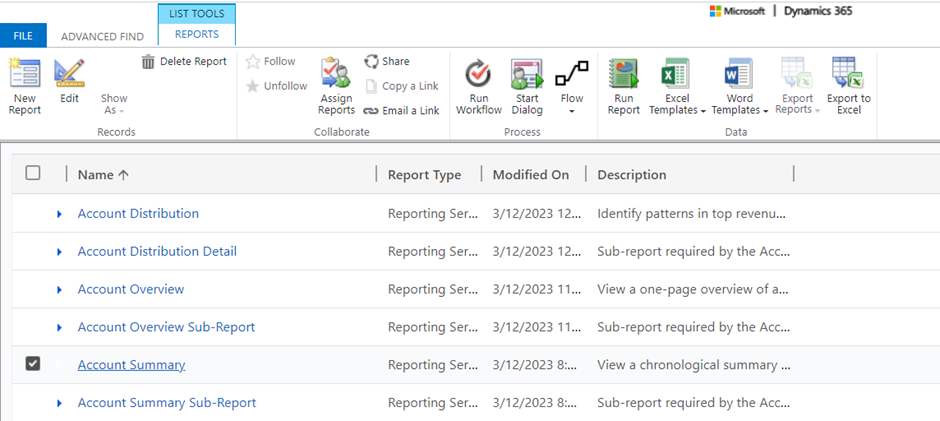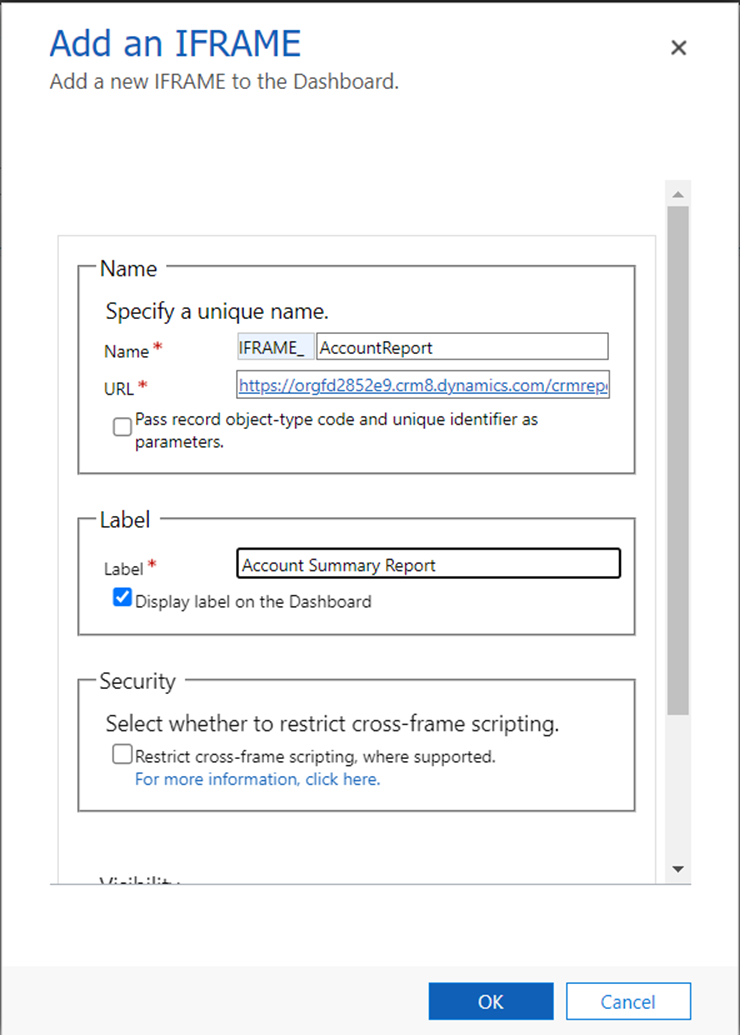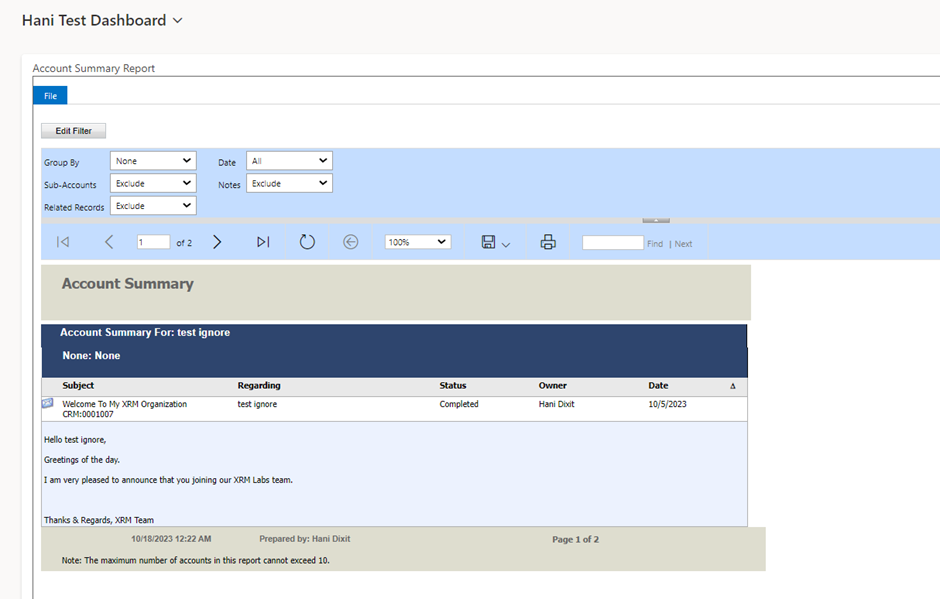In this blog, we will understand How to Show SSRS Report as a Dashboard Component in Dynamics 365.
Follow the following steps to Show the SSRS Report as in the Dashboard.
First, go to the Reports section from Advanced Find and find the report you want to add. And then click on the name of the report as if you were going to run it.

Copy the URL of the report, it will look like this below:
https://yourorganame.crm.dynamics.com/crmreports/viewer/viewer.aspx?id=%7bF5F7C711-81C0-ED11-B597-000D3A0A7BB6%7d&helpID=Account%20Summary.rdl&action=filter

When you copy the URL from the top of the browser window. Then insert it into Notepad to make it easier to edit. Find the last part where it has 'action=filter' and change the word filter to the word 'run'. This will ensure that the report will run automatically when you open the dashboard.
After that, create your new dashboard (or edit an existing dashboard if you want to add reports).
Add a new iFrame component. Paste the URL you just edited. Add a label if you want. Uncheck the box in the Security section for 'Restrict cross-frame scripting'. Then click OK to save. Save your dashboard.
Note – If you create a personal dashboard then the Security section for 'Restrict cross-frame scripting' is not unchecked so make sure to use only the system dashboard.

Finally, if you've created a new dashboard, add, and publish it to a model-driven app, then go to your dashboard and review it. The report will be automatically generated by you.
You can still edit any existing filters and scroll to different pages as needed. You may need to increase the width and height of the component on the dashboard to accommodate more data as needed. But that's it! It's very straightforward.
